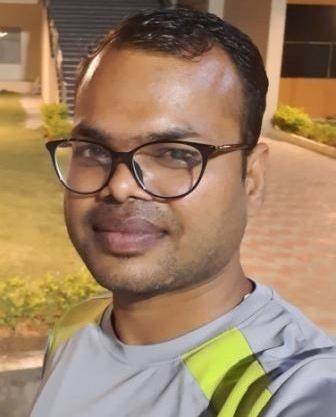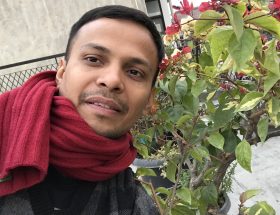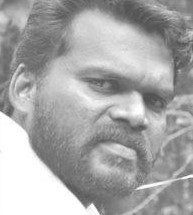Rahul Kumar Gautam
The Past life of Dalits
Since the time of Vedas, the people of India have been divided into a hierarchical caste system based on their occupation. According to Hindu scriptures, Brahmins are at the top. Dalits were separated from the four caste hierarchy classes (Varnas) and were referred to as Avarna.
According to Manu Smriti (a text that governed Indian society), Dalits were not permitted to receive education or save money for their families’ future. Jyotiba Phule and DR. B. R. Ambedkar emphasized self-esteem and education. Dr. Ambedkar never asked for reservations for Dalits. He wanted separate electorates for them. Dr. B. R. Ambedkar believed that by putting Dalits in a strategic position, they would be able to protect their rights without the need for external assistance. He successfully obtained separate electorates from the British. Mr. Gandhi was opposed to separate electorates for Dalits. Gandhi fasted in opposition to B R Ambedkar. The Poona Pact was signed on September 24, 1932, at Yerwada Central Jail in Poona, India, granting Dalits reservation in education and politics. It has been observed that the reservation made significant changes in the conditions of Dalits in a short period of time.
To better understand Reservation, consider the following example. Assume there is a 10-kilometer race with the goal of reaching the finish line in the shortest amount of time. Person A rides a bike, but Person B runs. Person A arrives at the destination in less than 10 minutes and spends less than 1 kilocalorie. Person B, on the other hand, runs 10 kilometres in 60 minutes while burning more than 1000 kilocalories. A is the winner, according to the objective person. However, when we look at the entire portfolio of both people’s struggles, we see that person B is the winner.
One might believe that anyone can buy a bike and attend a race. The bike is a physical resource with a cost in this context. What if the resource is valuable and only one of them has it? Caste Hindus ruled the economy, administration, temples, lands, and so on. Can you imagine a Dalit fighting a Savarna without these resources?
The majority of teachers in private schools are from the upper castes, increasing the likelihood of discrimination against Dalits. On 20 July 2022, a Dalit student, Inder Meghwal, was brutally beaten up by a Rajput caste teacher for drinking water from an earthen pot reserved for Savarna teachers at Saraswati Vidya Mandir in Surana village, Rajasthan. Untouchability is practised by caste Hindus in an endless list of ways:
- Force them to clean toilets (2 December 2022, The Wire)
- Call them using caste slurs (ABP news, Vikkas Mannkatala used caste slurs for Archana Gautam in Bigg Boss-16)
- Humiliate the whole community ( According to DH news, year 2022: Faeces were put in a Schedule Caste community’s water tank in a Tamil Nadu village where untouchability is still the norm)
- No access to public places like temples (According to India Today, year 2023: Dalits enter Tamil Nadu temple after 80 years despite opposition)
- Discrimination in midday meals (According to Indian Express, Dalit children were segregated during lunch in Banpurwa Government Primary School, Uttar Pradesh).
When I was in sixth class, my teacher who was a Baniya, referred to Dalits as “Harijan” and Muslims as “Muhamaddan.” These types of acts humiliate them and force them to drop out of school or divert their attention away from education. Who will be willing to send their children to schools where the teacher himself is discriminatory?
Dalit children attend school in these hostile environments. Despite the poor quality of education provided by government schools, SC/ST parents are required to send their children to government schools. Generally, the government is unconcerned about schools near the villages of the SC/ST communities. It reflects on the quality of education and the number of dropouts among Dalits. According to a UNICEF survey, 51% of Dalit children drop out of school, compared to 37% of non-Dalit and non-Adivasi children. As a result, caste is a problem in and of itself, as is the illiteracy rate among Dalits.
Discriminatory Development
Have you ever wondered why Dalit villages are always located outside of the city? As a result, development is delayed in comparison to upper caste society. Another thing is that the government school is always built in the middle of town. Dalit children walk for many hours from their homes to school, and have to attend classes even when they are tired. There can be no comparison between Savarna’s children and Dalits. They have more than enough study materials. Inequality among children was caused by caste.
Khaga (my town) is a town in Uttar Pradesh illustrating discriminatory development, where a Dalit community (Bairagi Nagar) lives next to a powerhouse substation. Although this Dalit community comes within the town (Khaga), they have 6 hours of electricity less than the Savarnas. This is a discriminatory governance where certain citizens in a town are denied access to the town’s services available to others.
Streets in Dalit villages will remain unmetalled until all roads connecting Savarna villages are metalled. Houses in Dalit villages will remain mud houses until all homes in Savarna society become pucca house. They can only set their life goals if they have enough money to build a pucca house or arrange money to marry their son. Due to lack of resources and government support, the majority of Dalits live in poverty from birth to death. As a result, caste which is a problem in and of itself, gives birth to the new problem of poverty among Dalits.
To move from village to city to get higher education
I’d like to share one incident from my personal experience: it happened when my age was between 15 and 16 years. I passed intermediate from the UP board. My brother suggested that I apply to the Allahabad Central University. I passed the exam and was admitted through the SC quota in the Mathematics group. The Allahabad Central University provides hostels accommodation to only some students who are on the merit list. I did not get a hostel room. The search for a room in Allahabad was a monumental task. Allahabad was 100 kilometres away from my house. I went to Allahabad every day to look for a room. Whenever I asked anyone, including landlords, for a room, they either said no or asked for my caste first. I spent two or three months looking for a room. I had some Savarna friends. They all got rooms in Allahabad easily.
An idea occurred to me: let’s stay with a friend (a Savarna). He was a good fellow and we always ate from the same plate. With the hostess’ permission, I began staying in my friend’s room. She had no idea about my caste. After a few days, I returned home to bring more luggage and then took the Chauri Chaura Express back to Allahabad at about 10 p.m. on the same day. I entered the house and stored my belongings in my room. I went to the hostess because she had invited me. She asked me to leave the room right away. I asked her the reason, and she said that they won’t give rooms to people from my caste. I begged, saying I will leave the room by morning. Her son was also present. He persuaded her with the condition that I leave the room by morning. I left the room and returned home. I had planned to drop out of school, but my brother encouraged me to travel to Allahabad’s outskirts. There are some Dalit landlords there, and I might be able to rent a room there. I quickly went and got a room. But it was too far away (about 16-20 kilometres) from the university. What did we observe here?
Is caste any different from terrorism? No! Terrorism’s aftermath lasts only 1-2 years, but caste’s disaster lasts over centuries and is still present. Caste follows each Dalit and attempts to destroy his future. Only a few people have the courage to fight for a better education. Reservations and the constitution aided them in combating caste terrorism perpetrated by Brahmins.
Therefore, caste is killing Dalits’ future in modern India by making them poor, preventing them from living a normal life, and preventing them from attending universities, among other things. There will be no need for reservation if caste is eradicated. We must fight to eliminate caste because it is at the root of all serious problems such as poverty, illiteracy, access to public places, representation, and so on. It serves as a threat to Dalits. The abolition of reservation or reservation based on income will be a move to enslave Dalits as long as the caste system exists.
~~~
Rahul Kumar Gautam, is from Fatehpur district of Uttar Pradesh. He graduated from Allahabad Central University and has done his post-graduation at NIT ALLAHABAD. Currently he is pursuing Ph.D. in computer science in the area of social network and analysis at Hyderabad Central University.










